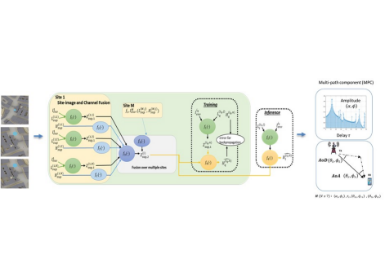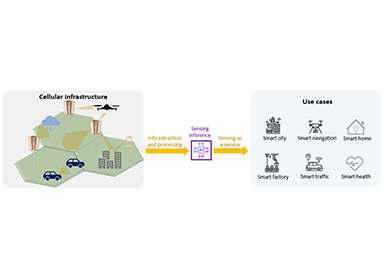Communications
The Era of 5G, and Standardization of Human Exposure to Electromagnetic Fields
Advent of mmWave 5G communications & regulations for human exposure
Since the Federal Communications Commission (FCC) in the United States announced the use of millimeter Wave (mmWave) spectrum for 5G services in July 2016, 106 operators in 20 countries acquired public licenses (many of them are regional) enabling the mmWave-based 5G services. ¹ Furthermore, Samsung’s Galaxy S10 5G, as the world's first mmWave handset, has successfully launched in the US market in May 2019.
5G spectrum can be divided into two parts, high frequency called mmWave such as 28 GHz and lower frequencies below 6 GHz. New mmWave 5G technology uses beamforming technologies, focusing the radio waves from antenna array to increase the strength of the signal. It means that a completely new method on compliance assessment for human exposure to Electromagnetic Fields (EMF) is required to comply with government regulation.
The human exposure to EMF is subject to exposure limits defined by each government regulation, mostly referring to the guidelines issued by the International Commission on Non-Ionizing Radiation Protection (ICNIRP). Meanwhile, the International Electromagnetic Commission (IEC) is in charge of international standards on measurement and calculation methods to assess human exposure to EMF.
This article describes the significant effort that Samsung has made to develop a new method on compliance assessment for human exposure for mmWave 5G devices, in collaboration with regulators such as FCC and MSIT (Ministry of Science and ICT in the Republic of Korea) as well as Samsung’s contributions to the IEC standardization activities.
Big change – new assessment criteria for human exposure
To commercialize a mobile device, it should secure government compliance approval in each country. LTE handsets using sub-6 GHz frequency bands assess compliance test for human exposure to EMF by applying specific absorption rate (SAR) as assessment criteria. SAR is a measure of the rate at which energy is absorbed per unit mass by a human body when exposed to a radio frequency (RF) electromagnetic field. If the measured rate is below a certain level defined by a national regulation, then the device is allowed to be placed on the market.
However, mmWave 5G devices could no longer take SAR criteria into account for several reasons such as different propagation characteristics compared to sub-6 GHz and the absence of human models for mmWave. Instead, power density (PD) criteria could be applicable to mmWave devices but no measurement assessment method on PD existed. Therefore, the development of a new measurement assessment method was an essential requirement to launch mmWave 5G in the market on time.
Standardization of human exposure assessment method
The mobile industry has been researching 5G technology and developing standards over a decade. Samsung finally announced that it had successfully developed the world’s first 5G mmWave mobile technology in 2013. ² Afterwards, to prepare the commercial launch of mmWave 5G around 2020, we initiated discussions with regulators, including FCC and MSIT, to find solutions to comply with government regulations.
In addition to our efforts of collaborating with regulators, we also endeavored to develop the IEC standardization of human exposure assessment methods on PD of mmWave 5G. Driven by Samsung, Ericsson, Telstra, SPEAG, FCC, etc., IEC decided, in October 2015, to develop an international standard with a target completion of 2020. Samsung contributed a significant amount of technical inputs along with taking a chairmanship of a technical group led by Kai Niskala, Samsung technical consultant from 2017.
The IEC standardization is a long journey, normally taking four to six years. As an interim measure to enable to accommodate countries, which wanted to license and commercialize mmWave 5G before 2020, IEC officially started to develop a Technical Report (TR) for mmWave 5G in November 2016 and approved the TR in October 2017 in Melbourne.

IEC meeting in Melbourne (October, 2017)
The IEC TR could be used as an official reference to develop regulatory and certification guidelines of countries such as the Republic of Korea and the United States, which wanted to rapidly launch mmWave 5G in the market.
However, the official announcement of a national regulation is entirely a different story. Regulators are often cautious when making new regulations. Samsung continuously made technical contributions to FCC and MSIT. Finally, Samsung’s Galaxy S10 5G was certified by the FCC as the world's first mmWave device and the MSIT announced the new regulation for mmWave 5G in 2019.
Announcement of new EMF guidelines: future of human exposure regulations
The ICNIRP develops international guidelines and limits of exposure to non-ionizing radiation that are based on science. So far, most regulators refer to the ICNIRP 1998 Guidelines to measure 5G exposure levels.
In April 2020, the ICNIRP has published its 2020 Guidelines for limiting exposure to EMF,³ which reflects the advents of new technologies such as mmWave 5G. In ICNIRP 2020, a new compliance metric, called absorbed power density (APD), is newly defined at the body surface while PD in ICNIRP 1998 is mainly defined at the free space.
The new definition of APD requires us to prepare for another new journey again to develop new methods for more practical human exposure assessment for 5G-Advanced and 6G with sub-Terahertz (sub-THz) in the coming decade. We are so excited to make another history with the ICNIRP 2020.






